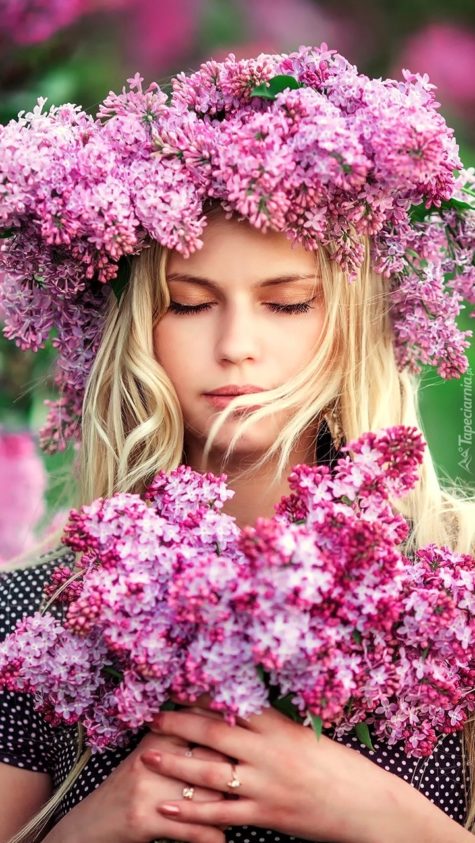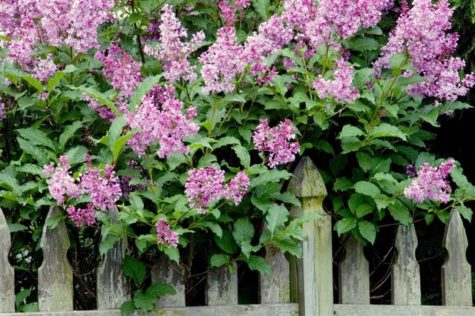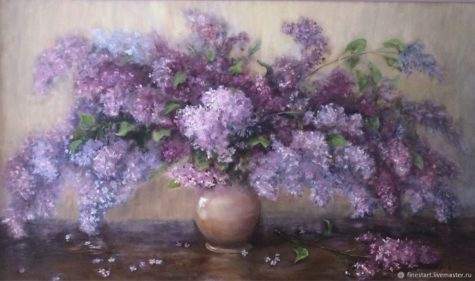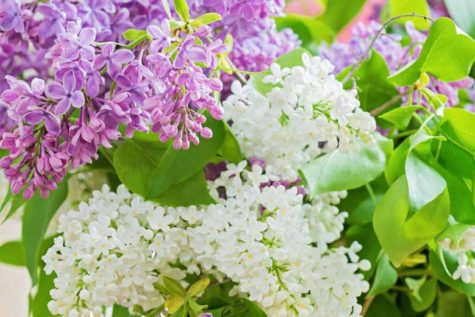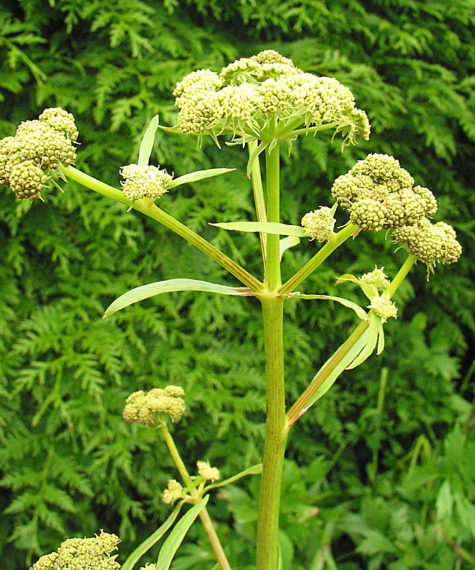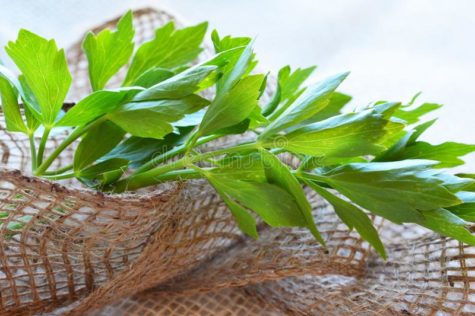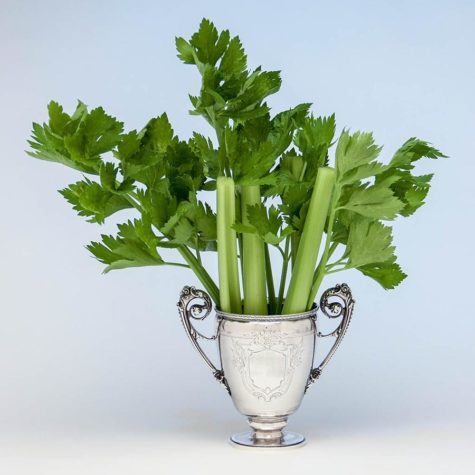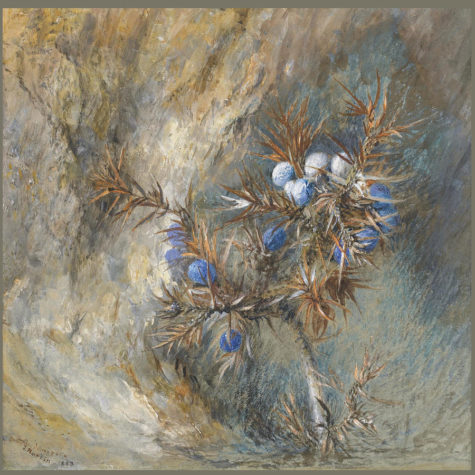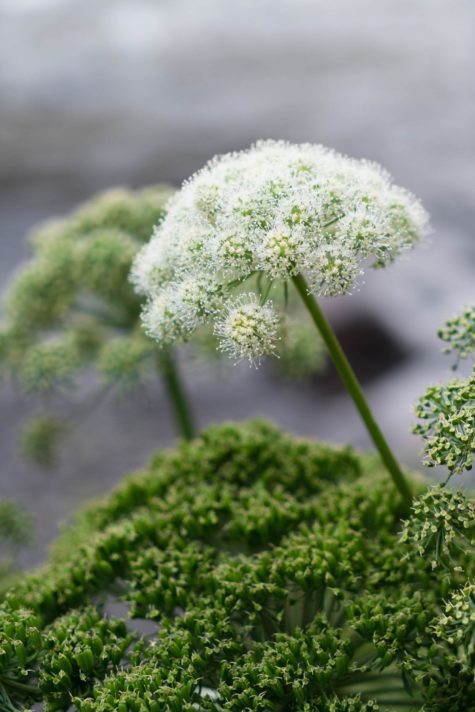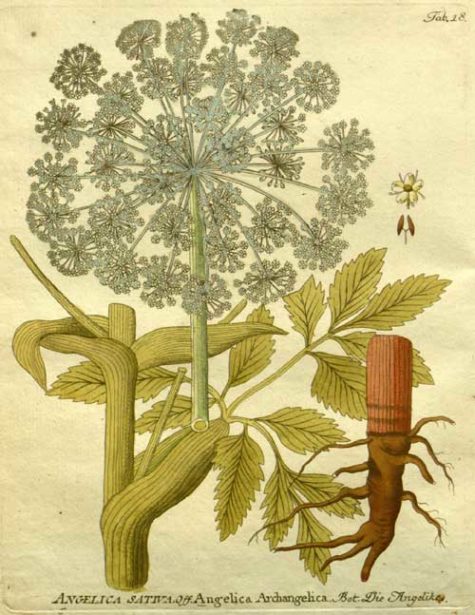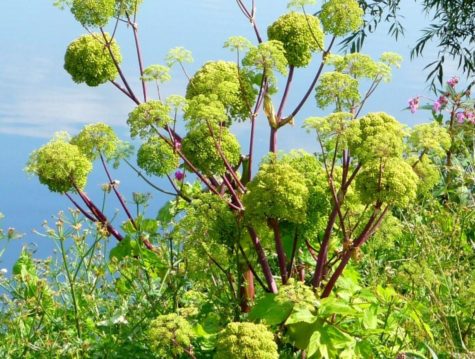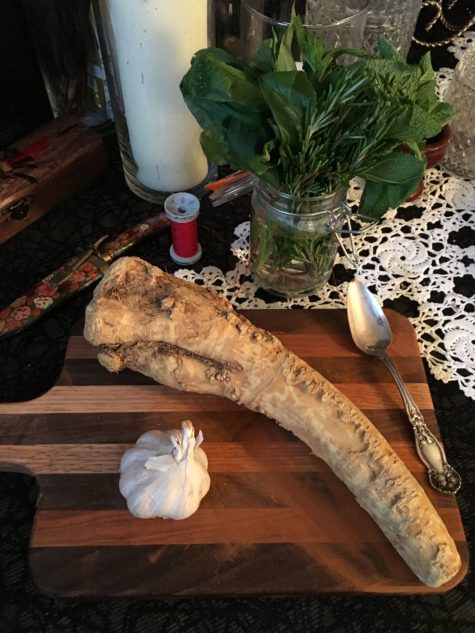Yearly Archives: 2020
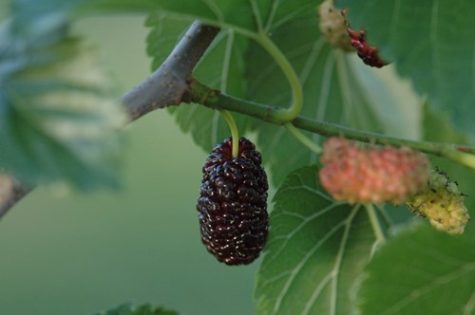
Magickal Uses
- Ruler: Mercury
- Type: Tree
- Folk Name: Blood of a Goose (tree sap)
- Magickal Form: Wood, Berries
- Magickal Properties: Insight, Courage, Focus
Add the berries to success spells for insight and inspiration. A mulberry leaf should be placed near the crib to protect the baby.
Sleep with Mulberry leaves under your pillows to have psychic dreams. Make a tea from the leaves and use the brew to draw protection sigils. Carry the leaves as a talisman for strength and courage. Meditate under the tree to sync your subtle bodies.
Use wood from this tree to craft a wand that will boost your willpower. A Mulberry wand will also bring more focus and clarity to ritual. It helps to center the practitioner, increase magickal awareness, and bring sudden insight, revelation, or Cosmic knowledge.
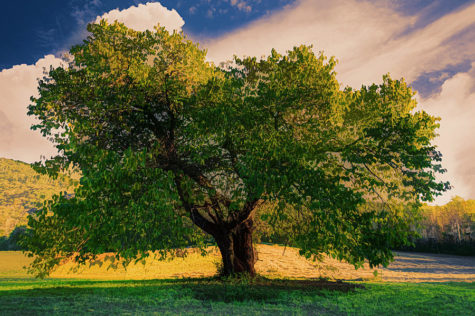
Mulberry Symbolism
Here are a few key words when it comes to the personality and symbolic meaning of this lovely tree:
- Caring
- Exploring
- Providing
- Nurturing
- Attraction
- Survivalist
- Adventurous
The mulberry is typically a fast growing bush-tree, and it will quickly take over a domain when happy. By association, mulberry tree people will expand, explore, seek, find and spread their wings to great lengths when living in the right environment.
Mulberries are such giving plants. They provide food for humans and animals alike. People connected to the mulberry tree meaning, will have the same tendency to give, provide, protect and nurture others around them.
In this same light, mulberries are natural magnets for all kinds of life. The lovely shade they provide and their delicious berries attract lots of interesting beings…from humans to birds to deer and more.
When connected to the mulberry tree, we can also attract lots of interesting people, nature, experiences, opportunities. Mulberry people will be quite fortunate, and can be like a vortex…calling to themselves who and what they needs.
This is largely due to the mulberry’s ability to remind us all about the understanding of give and take. The mulberry shows us that as we give, energy will be given to us as well. It is the Law of Reciprocation, and he will have an innate understanding about this.
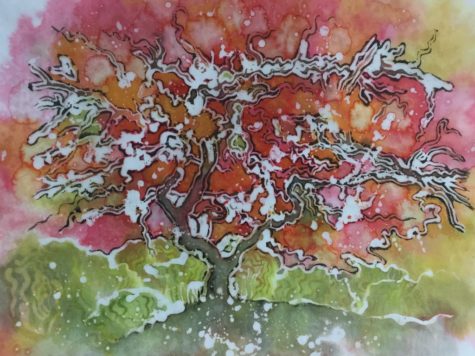
Mulberry Dreaming
There are many conflicting ideas about what mulberries mean in dreams. This is what I found:
- Eating mulberries in a dream mean increase in one’s earnings, praiseworthy religious assiduity, good faith, certitude and leading a healthy life.
- The mulberry tree in a dream represents a wealthy person with many children.
- Mulberry in a dream also could mean borrowing money.
- A mulberry tree in a dream also represents a wealthy and a generous man with a large family.
- Eating black mulberry in a dream also means prosperity.
- Dreaming of eating mulberry means windfall profits.
- Dreaming of mulberry, that disease will prevent you from fulfilling your wish, and friends often visit you, hoping that your help can alleviate their pain and suffering.
- The woman dreamed of eating mulberry, indicating that she could give birth to a child with great achievements in the future.
- Dreaming of eating mulberry foreshadows something that is painful and disappointing.
- A pregnant woman dreaming of eating mulberry, implies that she would have a noble child.
- If you are a married woman, you are about to conceive , or you will give birth to bright, intelligent children in the future, which will make your family prosper.
And then there was this confusing explanation:
This dream has good luck and bad luck. Those who dream of mulberry trees must be young and have no blunders; those who dream of mulberry trees who are thin have less interest and are better. Dreamed that if the mulberry tree withered, the Lord’s good luck. Planting mulberry trees is difficult to protect. Mulberry trees in the rain are difficult to eat. Body tied to mulberry, internal heart injury.
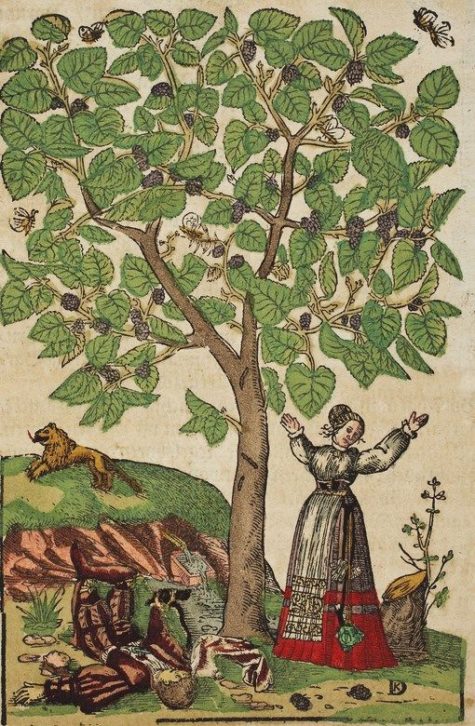
History and Lore
According to a German folklore, the roots of mulberry tree are often used by the devil to polish his boots (and therefore, these trees are associated with evil).
In China, the mulberry is considered the World Tree that connects the Heavens, the Earth and the regions below.
There was a sacred grove of mulberry trees planted outside the eastern gate of the early royal cities, and the tree was associated with this direction because as the “house” of the Mother of the Suns, the Sun rose every day by climbing up the Mulberry tree.
The wood of the tree was used to make bows that “shot” away evil influences that emanated from the compass points.
There is evidence that the Mulberry was revered in Islam too, since the tree can be found close to Muslim sanctuaries.
Mulberry paper is used as vessels for offerings in Shinto shrines. Japanese families often used mulberries as a part of their family crests, and strips of the fiber were hung from sacred trees as prayers. The mulberry leaves were also used to feed silk worms, who produced the fiber to make kimonos fit for the ruling class. In all of these capacities, the mulberry represents support, nurturing and self-sacrifice.
The Romans ate Mulberries at their feasts, as we know from the Satires of Horace, who recommends that Mulberries be gathered before sunset.
We also find mention of the Mulberry in Ovid, who in the Metamorphoses refers to the legend of Pyramus and Thisbe, who were slain beneath its shade, the fruit being fabled to have thereby changed from white to deep red through absorbing their blood.
Pliny speaks of its employment in medicine and also describes its use in Egypt and Cyprus. He further relates:
“Of all the cultivated trees, the Mulberry is the last that buds, which it never does until the cold weather is past, and it is therefore called the wisest of trees. But when it begins to put forth buds, it dispatches the business in one night, and that with so much force, that their breaking forth may be evidently heard.”
It has been suggested that the generic name of the Mulberry, Morus, has been derived from the Latin word mora (delay), from this tardy expansion of the buds.
As the wisest of its fellows, the tree was dedicated by the Ancients to Minerva.
Sir Walter Scott relates in his famous story Ivanhoe that the Saxons made a favorite drink, Morat, from the juice of Mulberries and honey.
There are many famous Mulberry trees in England. Those of Syon House, Brentford, are of special historical interest and include what is reported to be the oldest tree of its kind in England, said to be introduced from Persia in 1548.
It is this particular and venerable tree which forms the subject of an illustration in London’s Aboretum and Fruticetum. Although a wreck compared to its former self, it is regarded as one of the largest Mulberry trees in the country. Its height is given by Loudon as 22 feet, and additional interest is attached to this tree, as it is said to have been planted by the botanist Turner.
In 1608 James I, being anxious to further the silk industry by introducing the culture of the silkworm into Britain, issued an edict encouraging the cultivation of Mulberry trees, but the attempt to rear silkworms in England proved unsuccessful, apparently because the Black Mulberry was cultivated in error, whereas the White Mulberry is the species on which the silkworm flourishes.
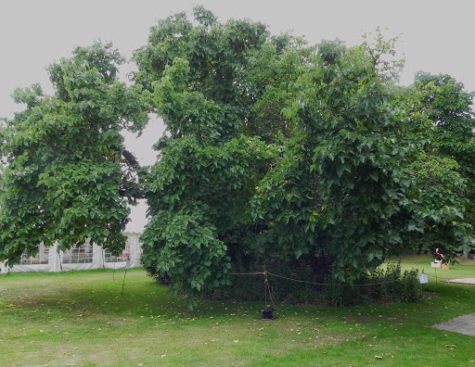
Shakespeare’s Famous Mulberry
Shakespeare is said to have taken a Mulberry tree from the Mulberry garden of James I, and planted it in his garden at New Place, Stratford-on-Avon, in 1609. This also was a Black Mulberry, “cultivated for its fruit, which is very wholesome and palatable; and not for its leaves, which are but little esteemed for silkworms.”
“The Tree,” Malone writes, “was celebrated in many a poem, one especially by Dibdin. But in about 1752, the then owner of New Place, the Rev, Mr. Gastrell, bought and pulled down the house and cut down Shakes’eare’s celebrated Mulberry tree, to save himself the trouble of showing it to those whose admiration of the poet led them to visit the ground on which it stood.”
The pieces were made into many snuff boxes and other mementoes of the tree, some of them being inscribed with the punning motto, “Memento Mori.”
Ten years afterwards, when the freedom of the city was presented to Garrick, the document was enclosed in a casket made from the wood of this tree. A cup was also made from it, and at the Shakespeare Jubilee, Garrick, holding the cup, recited verses, composed by himself in honor of the Mulberry tree planted by Shakespeare:
“Behold this fair goblet: ’twas carved from the tree
Which, oh, my sweet Shakespeare, was planted by thee!
As a relic I kiss it, and bow at thy shrine,
What comes from thy hand must be ever divine.”
“All shall yield to the Mulberry tree;
Bend to the blest Mulberry:
Matchless was he who planted thee,
And thou, like him, immortal shall be.”
A slip of it was grown by Garrick in his garden at Hampton Court, and a scion of the original tree is now growing in Shakespeare’s garden.
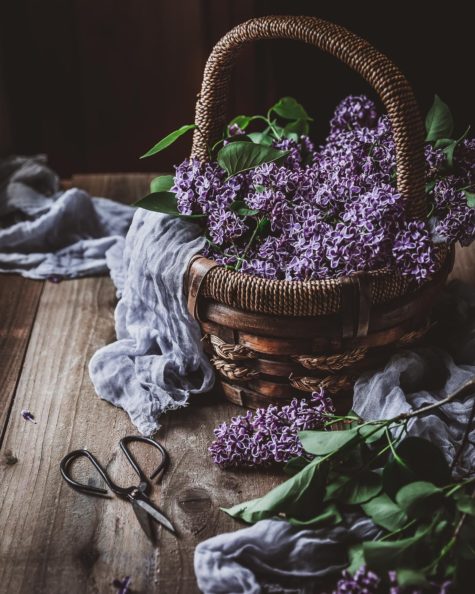
Magickal Uses
- Part used: Fresh flowers
- Planet: Venus
- Element: Earth
- Magickal Influences: Love and Purification
This is the flirt flower. It attracts love quickly although the love it brings often doesn’t last for long. Wear the fragrance or bathe in fresh lilacs when you want a fling. This flower is for fun. It is a great scent to spray in a room before parties or before meeting a date who is taking the relationship too seriously. Lilac keeps things light.
Inhale the aroma rising from the light purple flowers for internal purification. To cleanse a home, place jars of the fresh flowers in several rooms. Bathe in Lilac dew on May Day for a year of beauty.
The scent of fresh lilac flowers was once thought to drive away ghosts.
The scent of lilacs enhances a child’s educational aptitude. Here are a number of ways to use it:
- Place a drop of lilac fragrance oil on a light bulb near where a child studies.
- Place a vase of fresh lilac blossoms on the child’s desk so that the fragrance wafts over the child while studying.
- Place a table and chair outside next to a lilac bush in bloom and send the child outside to study.
Like many flowers, lilacs can be utilized in love expansion rituals. The sweet fragrance of these seasonal blooms brims with loving energies.
In aromatherapy the fragrance of Lilacs is recommended to patients who suffer from chronic depression and anxiety. Lilac blossoms can be added to your bath for a soothing aromatherapy remedy for stress and anxiety.
No true lilac essential oil is currently available, however lilac scents are available. They are said to bring peace and harmony. Also believed to induce “Far Memory” or the ability to remember past lives. It is also useful for inducing clairvoyant powers in general.
Lilac oil reputedly repels vampires and is certainly more fragrant than garlic. Most of the Lilac oil that is commercially available is synthetic; presumably vampires can tell the difference. If you make your own, the lingering aroma should keep the vampire out of the house as well.
A recipe for how to make your own lilac oil can be found here: Oil of Lilac
Jennifer Shepherd at the Lipstick Mystic recommends using the seasonal qualities of lilacs as a way of jump-starting your life. She says,
“Since lilac tends to be one of the earlier flowering plants each spring-time, it carries with it some of the same spiritual energies of other “early bloomers” like daffodils and forsythia. Lilac has the same quality of being able to push or penetrate through harsh, heavy “winter” energies.
So if you’re seeking some kind of significant breakthrough in your life, and you want a little extra kick or punch to help get you through, connecting with the energies of lilac can be very helpful. Smelling the fresh flowers on the bush or bringing a few blooms inside to enjoy is the best way to connect with this special plant.”
Lilac blossoms are natural astringents–they dry things out. Place a cup or two of slightly wilted flowers in a jar, and fill with witch hazel. Allow it to steep for a few days, and then strain out the flowers. Use the lilac and witch hazel blend as a facial toner, to keep your skin looking healthy and fresh all summer. Dab a bit on your wrists when you’re getting ready to go out, to attract new love your way.
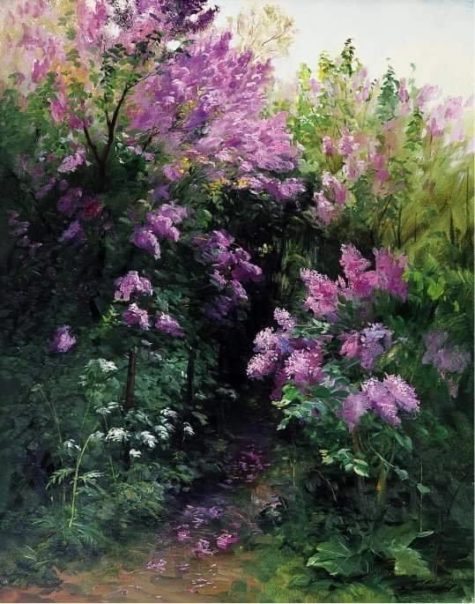
The Lore of Lilacs
The trees were respected by Orthodox Christians and the plant’s Greek name “pashalia” is derived from “pasha” which in Jewish means “passage” as they were considered to drive ghosts away instantly. The lilac tree is also linked with reincarnation.
One of the plant’s secrets is that the flowers do not fade under hot water. Lilacs are said to remove ghosts, aid the exploration of past lives, and bless the passages of life, both birth and death. Purple lilacs are the symbol for the first emotions of love. If the blossoms are strewn about it is said they can ward off evil.
Lilacs have a history of promoting clairvoyance, divination, peace, harmony and creativity. Lilac tonics were probably first introduced in Henry 8th time. They are called a harbinger of spring. White lilacs are a symbol of innocence.
In some parts of England, it is considered unlucky to bring Lilac, especially white Lilac, into the house. The purple and red varieties are usually less feared, but even they are sometimes excluded from house decorations as bringers of misfortune.
In the 1960’s, a florist in Oxford England strongly advised a customer not to buy white Lilac for a friend in the hospital on the grounds that many people thought it foretold death if brought indoors. He did not know why this should be so, only that it was quite commonly believed. In fact it is almost certainly due to the widespread association of death and misfortune with “drowsy-scented” flowers, and also with those which are white.
An interesting detail about the Lilac tradition is that it is found only in some English districts, especially in the midland counties, and quite unknown elsewhere.
It is lucky to find a five-petaled lilac blossom of any color. Along the Welsh border, Lilac trees are said to mourn if any of their kind are cut down, and to be flowerless in the following year.
From the Cincinnati Enquirer 1 August 1900, we have this fun little tidbit:
“She who wears the lilac will never wear the wedding ring,” runs the old proverb, and although the scent of the flower is sweet and its tints are fresh and universally becoming it is contraband among the village maidens in England.
A single boutonniere of lilac has been held responsible for solitary spinsterhood. For the same reason mothers with marriageable daughters never allow a jug of the sweet smelling blossoms inside the house. It may stand on the outside window sill, but “there’s no love luck about the house” when there are lilacs in it.
To give one’s sweetheart a spring of the flower is the death blow to the most secure of engagements. White lilacs are even more fatal to love affairs than the colored ones; they are, in fact, as ominous as an opal ring. Love, however, laughs at artificial flowers, and only the real tree grown one can come between the lover and his lass.
Stony-hearted bachelors sometimes sport a lilac boutonniere as a charm against feminine blandishments. Londoners do not share the superstition, and use the flower freely for decoration, regardless of the unlucky attributes.
Queen Adelaide, consort of King William IV, was apparently unafraid of lilacs, although, to be fair, she was already married when she commissioned her famous Honiton lace dress whose flower patterns, included lilacs, spelled out her name.
The meaning of the lilac flower has diversified throughout the ages. Lilacs originated in Southeastern Europe and are a popular part of the Mediterranean culture. They are frequently associated with the Easter holiday, which occurs during the peak of its bloom time.
Lilac meanings vary throughout different cultures and time periods.
- The Celtics regarded the lilac as “magical” due to their incredibly intoxicating fragrance.
- During the Victorian Age, the giving of a lilac was meant to be a reminder of an old love. In fact, widows were often seen wearing lilacs during this period.
- In Russia, holding a sprig of lilac over the newborn would bring wisdom.
- In the United States, the lilac is the official state flower of New Hampshire and represents the ‘hardy’ nature of its people.
Because lilacs have one of the earliest bloom times, they symbolize spring and renewal. Lilacs also symbolize confidence, which makes them a traditionally popular gift for graduates. There are many meanings that lilacs have that can best be classified by color.
- White lilacs symbolize purity and innocence.
- Violet lilacs symbolize spirituality.
- Blue lilacs symbolize happiness and tranquility.
- Magenta lilacs symbolize love and passion.
Lilac, the color for which this flower is named, is a light purple that symbolizes a first love.
Although various colors of lilacs have different meanings, the lilac has always had a strong association with love and romance throughout history.
Dreaming About Lilacs
Lilac in a dream is a sign of future changes in personal life, the anticipation of big feelings and an exciting love affair.
- White lilac personifies purity, sincerity, sensuality, the birth of affection.
- Violet lilac is a longing for love experiences, yearning of the heart; awakening of romance.
To dream of a blooming lilac is a sign of positive emotions, receiving pleasant news or surprise.
Standing under lilac bush in a dream promises a person a frivolous sexual adventure, which will very quickly exhaust itself, and feelings will evaporate before they turn into something serious.
Miller’s dreambook positioned dreams about lilac mainly as a good sign, foreshadowing love experiences, romance, a surge of sensuality. Flowering lilac shrub reflects the kind and open attitude of people around them to the dreamer, trust and sympathy. Tearing lilac shows a greater likelihood to achieve the desired.
A bouquet of lilac is a sign showing opportunity to find something new about your beloved person, to have sincere conversation. The image promises a romantic acquaintance for single people, but this union will not be long-lasting.
For people who have been married for a long time, a bunch of lilac flowers speaks about the revival of long-forgotten romantic feelings between spouses – sexual desire will be restored and a seemingly past, withering passion will appear.
Some dreambooks interpret ambiguously dreams of a lilac branch. To see a torn off branch in a dream is a symbol of illusion, deceptive hopes that will never be realized. One should beware of strangers who sincerely offer friendship at first glance. To see the blossoming branch of a lilac bush from a window in a dream promises pleasant pastime and an unexpected gift.
To see lilac in a dream and feel its scent means an extraordinary, almost mystical attraction to a person of the opposite sex. Dream interpretation advises not to succumb to this feeling (which will be very difficult to do), because the fruits of such intrigues will remind of themselves more than once, and can easily ruin the life of even the most self-confident person.
If the dreamer happened to pick the fragrant lilac in a dream, it means he will attract close attention of a person whom he likes for a long time.
To dream of a lilac flowers represents feelings about how beautiful it is to notice never fearing a sense of accomplishment in something that isn’t dependent on anything else. A sense of accomplishment in something that nobody else wants to do that always cares about your feelings. Feeling good noticing yourself successful from being self taught. Feeling good about your children having grown up to be independent never needing you for anything.
Sources:
- Encyclopedia of Herbology
- Mrs Daffodil Digresses
- Magical Aromatherapy
- The Encyclopedia of Superstitions
- Encyclopedia of Magickal Ingredients
- Magical Herbalism
- Element Encyclopedia of 5000 Spells
- FTD by Design
- Check My Dream
Magickal Uses
- Planet: Sun, Venus
- Ruler: Pan, Astarte
- Element: Water, Fire
- Astrological Sign: Taurus
- Parts Used: Dried Root
- Basic Powers: Love, Purification
Lovage is one of the most dependable herbs for drawing romance into one’s life. Not only will it bring you love, but regular bathing with this herb will enhance your beauty, physically, and will also allow the inner radiance to shine forth more brightly.
For this reason, Lovage is often used as a bathing herb, cast into the bath, the pleasant scent filling the room and delicately scenting the bather. In this manner, particularly when combined with a candle and poems of a romantic nature, is one able to attract romance.
Add seven rose buds to a Lovage bath, and you will become more attractive to the opposite sex.
With a subtle floral scent, the root is an effective addition to Herbal Amulets to attract love, and it can be steeped in wine to be served to a prospective lover.
You can also add the root, or a strong tea made by boiling the root, to a bath to become psychically cleansed.
In Central Europe, women wore Lovage around their necks when meeting lovers, and the herb was often put in love potions as a guarantee of everlasting devotion.
To encourage someone to love you more, the following can be done:
For nine successive days, rise early, boil Lovage root in water to make a tea, hand-bathe your genitals and face in this before dawn, carry the wash basin to a crossroads, call the name of the one you love, and throw your used bath water toward the sunrise.
One of the most nonjudgmental of herbs, Lovage draws the person most suited to your soul. A great root for bisexuals or anyone confused about which gender he or she is (or should be) attracted to. It is best used when invoking a new relationship and promises to quickly attract your heart’s desire.
Plant Lovage in front of and around your home to help ward off all sorts of unwanted intruders, ranging from door-to-door salespeople, to evil spirits, to epidemics, to vermin.
The leaves can be placed in the shoes to relieve weary feet.
Lovage dug up at night on Good Friday reputedly helps ward off either witches or the influence of the Devil.
Folk Names
- Bo’ Hog Root
- Gout Weed
- Italian Parsley
- Lavose
- Love Root
- Lubestico
- Sea Parsley
- Smellage
History and Folklore
The history of Lovage goes back to the ancient Greeks who chewed the leaves for digestion and gas. Both the Greeks and the Romans used the herb as a medicine, and in the Middle Ages it was used as a cure-all for most illnesses.
- The seeds were nearly as expensive as black pepper at one time.
- Hildegard of Bingen used Lovage in her cooking.
- John Gerard believed Lovage was one of the best remedies of his time (mid 1500s).
Lovage has an ancient history. It was introduced into Britain by the Romans and brought here by early English colonists and was often found in their gardens. Lovage was one of the seeds found in the early American Shakers’ seed sales.
As both a medicinal and culinary herb, Lovage now grows in the authentic garden at Plimoth Plantation, the re‐creation of a Pilgrim village in Plymouth, Mass.
New Englanders would candy the root and chew on the seed during long church services to keep them alert.
Colonial women “cured” many ailments with Lovage: sore eyes, upset stomach. They used fresh leaves for summer “sallets” and flavored winter soups, with the dried root. The dried leaves seasoned the stuffing for roast goose or turkey.
Sources:
- Encyclopedia of Herbology
- The Master Book of Herbalism
- The Herb Book by John Lust
- The Complete Book of Herbs and Spices
- Hoodoo Herb and Root Magic
- Magical Herbalism
- The Herbal Academy
- The Herbal Alchemists Handbook
- Element Encyclopedia of 5000 Spells
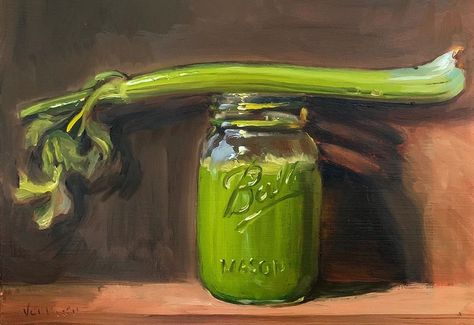
Magickal Uses
- Ruler: Mercury
- Element: Air
- Parts Used: Seed, Stalks, Oil
- Magickal Influences: Psychic awareness, Sleep
It should be mentioned that this is the garden celery under the rulership of Mercury, rather than Wild Celery, which is under the dominion of Venus.
This herbal seed, found in most kitchens, is used as a Visionary Herb. There are forms of divination which recommend drinking a tea of the seed as it opens the mind and allows for better concentration.
Use celery seed to increase male virility. Men can either eat it or add it to poppets in sympathetic magick spells.
To awaken your psychic awareness, crush about a teaspoon of the dried seeds and tie up in a piece of thin, cotton cloth. Inhale the odor and visualize your conscious mind relaxing (perhaps as a fist relaxes), allowing true communication with your psychic mind to occur.
- Rub the oil into fingers or the third eye to increase communication skills.
- Eat raw celery to remove blocks and fears and to promote weight loss.
- Cook the stalks in soup for love.
Folklore recommends putting celery into an herb pillow to induce sleep. Chewing celery seeds reportedly enhances concentration. Or burn them with orris root (iris roots) to enhance psychic powers. Witches flying on their brooms chewed celery seed to prevent dizziness.
Celery is sometimes used as a cure for impotence. Several sticks of celery need to be boiled in a saucepan of water until the celery turns into a pulp. The person with the problem needs to eat this while it is still hot, and can then look forward to a night of successful lovemaking.
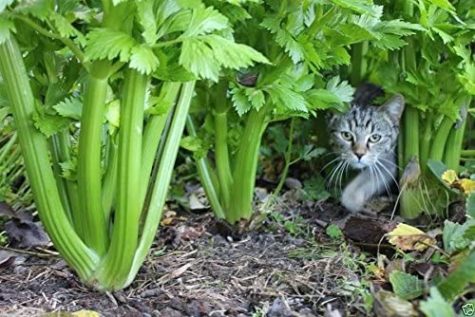
Folk and Other Names
- Aches des Marais
- Ajmoda
- Ajwan
- Apii Frutus
- Apio
- Céleri
- Celeriac
- Fruit de Celeri
- Graine de Céleri
- Karmauli
- Maiden’s Smallage
- Persil des Marais
- Qin Cai
- Smallage
- Selleriefruchte
- Selleriesamen
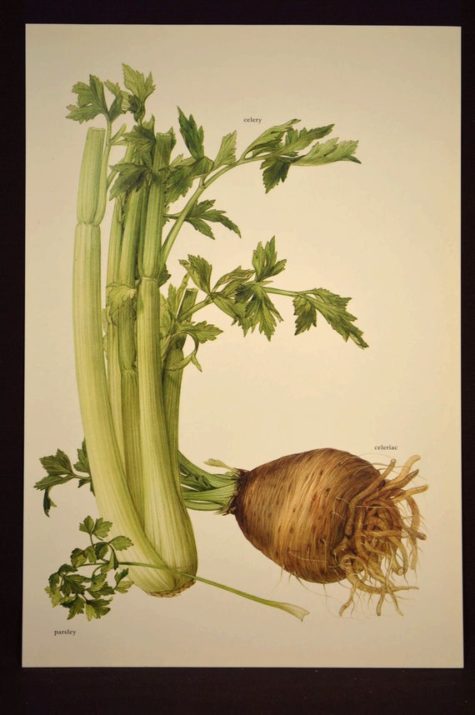
Folklore and History
Celery had its beginning several thousand years ago in shallow swampy areas of mainland China. The plant was prized for its seed, used medicinally and as a flavoring, and mentioned in the writings of Confucius. This would place it at about 500 B.C. on the world timeline.
A similar plant grew in the Mediterranean. It had a strong aroma (its Latin name means “strongly smelling”) and dark green leaves. The Greeks fashioned wreaths from it to adorn the victors in athletic and musical competitions. The Romans considered deemed it an aphrodisiac. And garlands of the leaves were found in Tutankhamun’s tomb.
The modern name “celery” comes from Greek selinon. It was ascribed to Silenus (or Seilenus), the son of a nymph and lustful Pan (or, according to other depictions, Hermes, the messenger of the gods who transgresses all borders).
Silenus, constantly drunk and lecherous, is depicted as pot-bellied with a beefy bald head and often with the ears, tail, and legs of a horse. He was the leader of the lustful horde of satyrs as well as the teacher and companion of Dionysus, the god of inebriation. Half human, half horse, Dionysus symbolizes, among other things, the powerful animal drive. The association of this satyr with celery, emphasizes the plant’s use as an effective agent of sexual potency.
Celery is presented as signifying both death and sensual pleasures in Homer’s epic The Odyssey: celery grows among violets in the meadows on Calypso’s magical island. (The Hellenes classified violets as “erotic plants,” which they dedicated to Priapus, the little deity with the big phallus; Aphrodite, the goddess of love; and Persephone, the goddess of the underworld and the dead.)
In the Odyssey, the enchantress Calypso took in shipwrecked Odysseus and held him enraptured for seven years; she also turned his men into “swine.” Comparative religion studies indicate that Calypso was a goddess of death, as the name suggests (kalypto = to enshroud) and that pigs were sacred to the earth and death goddess of antiquity.
That Odysseus ultimately freed himself from her magic is seen as a victory over death, as in all mythologies the hero, having come dangerously close to death, succeeds in wresting new life from the dark forces. This interpretation lends meaning to the ancient Greek practice of crowning winners of riding and gymnastic games with celery leaves.
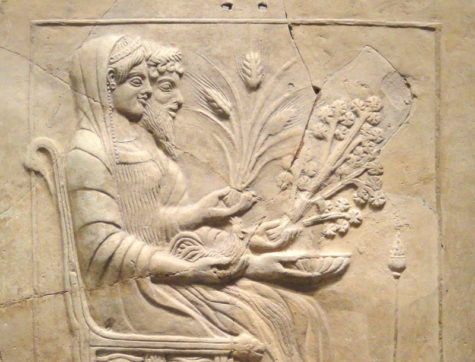
Celery has a long association with death. Ancient Egyptian mummies were often decorated with celery and blue lotus blossoms. Ancient Greeks planted it on graves and used it to season funeral feasts. The Roman Virgil (70–19 BC) described much the same:
“Godly Linus decorated his head with flowers and bitter celery [as a sign of mourning]”
“It is not right to put celery in common dishes because it belongs to funeral feasts.”
The Romans also dedicated celery, as part of the death rites, to Orcus, the god of the underworld, as told by Plutarch (45–120 AD): “We decorate our gravesites with celery.” Given such practices, it was considered a bad omen to see a cart loaded with celery first thing in the morning. And for someone who was marked by death, the Romans said: “There is only celery left for him.” This is an interesting angle given the fact that, like the ancient Greeks, Romans also crowned their victors with celery leaves. And celery, next to dill and coriander, was a favorite condiment in the Roman cuisine.
Celery’s association with death lasted well into our own times. Wend (Slavic) tradition in northern German Spreewald claims that merek (celery) protects against being haunted by the dead.
And the Italian fairy tale “Marianne and the Celery King” tells of a maiden who, attempting to pull a celery bulb from the soil is instead pulled into the ground; “the ground closed over them like water over a stone.” Below the earth, she finds a golden castle and an old, long-bearded hunchbacked man who resembles a celery root: the Celery King, who marries and impregnates her. But he is also an enchanted prince. After the heroine surmounts numerous tasks and challenges she is able to redeem the prince and bring him back to the world above the ground.
Nowadays such stories are given anecdotic value at most. However, traditional customs, folklore, and imaginative perception teach us much about the essence of the plant. In such imaginative terms, let us consider the celery.
Celery is a biennial; its “incarnation” lasts two years. In the first year, it concentrates on absorbing salty, moist earth forces, during which time it swells and becomes lush. During this year there is a clear pull to the dark, cool earth realm, to downward-moving elements and, figuratively speaking, to the grave, bitter death, and the mourning that causes salty tears to flow—but also to the fertile, ever-bearing primal source.
In the second year the plant ascends to the light, shooting up into bloom, opening and branching out as it bathes in cosmic light. The plant now sets a counterpoint to the earthy, moist, salty forces with its “light and fiery” essential oils.
Thus it becomes a plant for victors and heroes, one that overcomes the dark forces, that wards off the evil eye (in Spain), that thwarts the scheming of wicked witches. Even in modern Greece celery blossoms—together with garlic and onion—are hung for good luck. They protect the area where silk worms are being raised; small children are given amulets of celery to keep them from harm.
In Prussia and Pomerania the leaves were stuffed into cracks in floors and walls in pigsties to protect the animals from evil magic—and young married couples were given a piece of root to put in a pocket or a shoe for good luck.
Nicholas Culpeper (1616–1654) recognized the ambivalent nature of celery. He ascribed the plant to the hermaphroditic god, Mercury—the Roman Hermes, who can as easily fly up to the light-filled world of the gods as he can descend to the underworld. Indeed, Mercury-Hermes is the ruler of rising and sinking energy flow. He loosens, cleanses, opens, splits, and removes blockages by bringing everything back into flow.
Culpeper, just as other doctors before and after him, used this mercurial plant to heal “water diseases,” “obstructions” while urinating, and stone ailments, and to activate the liver and the spleen.
Celery works in the microcosm of the human body true to character. It affects the root chakra, the Muladhara, down into the sexual organs and the “salty, watery” urinary organs. Celery can reduce the milk flow for nursing mothers—a compress can actually temporarily reduce the breast size—but can also stimulate the uterus and bring on menstruation.
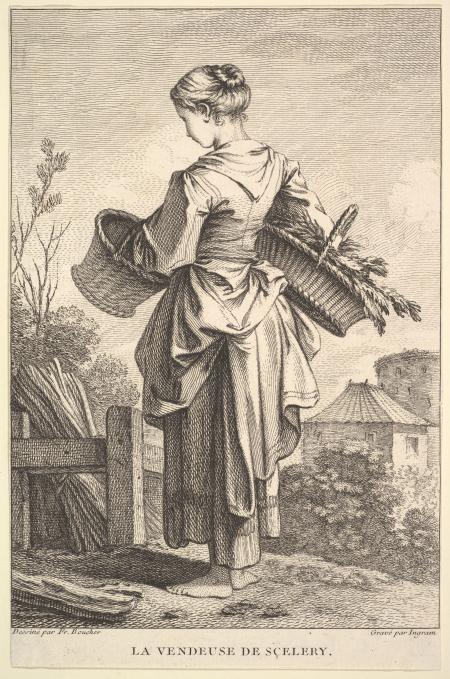
As “maiden’s smallage” it belonged to the herbs that women took in case of a “belated period,” when they feared they’d been impregnated. German scholar and bishop Albertus Magnus (1200–1280) described the downward pull of the plant: “Celery causes sensual desire to descend from the breasts of wet nurses to the genital area and bring about menstruation.”
It is often the case that emmenagogues work for men as aphrodisiacs, as indicated in such names as “stand-up herb” (Lausitz, Germany), “stand-up wort,” “stud wort” and “buck’s wort.” A fifteenth-century medical book tells us: “So that your wife stays faithful forever mix celery juice and honey and rub your genitals with the mixture. This way she will be satisfied and will want no one else but you.” Consider too this German saying:
Fry me eggs, sweetheart,
with celery and lettuce,
on Sunday we will go courting,
my mother told me this.
This aspect of celery is also well known in France, the country of savoir vivre and l’amour, as in the following: “If a woman knew what celery does to a man, she would be willing to go from Paris to Rome to find it.” And, “If a man knew what celery does for him, he would plant his garden full of it.”
In 14th-century Italy where the rich and curious began to selectively cultivate celery. The stalks became fatter and pleasingly crunchy; they paled from intense dark green to a subtle, delicate hue; and the taste evolved from bitter to pleasingly grassy and citrus-like.
When celery lost its flavorful wild side, it also became less rampant. These new strains were fussy and difficult to obtain, which of course made them irresistible to the elite. By the mid-19th century, celery was so prized by the upper class that serving vases were made specifically for the purpose of displaying it as the centerpiece at fine dinners.
While European epicures were feasting on blanched celery au velouté, American farmers were reveling in how easy it was to cultivate the luxury vegetable in the Great Lakes region. They were resourceful, ambitious, and even competitive when it came to growing celery.
As the celery craze was reaching its zenith in the 1870s, Dutch farmers who knew how to handle wetlands began growing the vegetable in the black, marshy soils of Kalamazoo, Michigan, which became known by the catchy name the Celery City. The streets were littered with hucksters peddling celery from street corners and train stations. As American cultivation improved, celery became an everyman’s item. By then, the British upper classes had moved on to French luxuries like truffles and oysters.
Sources:
- Magickal Aromatherapy by Scott Cunningham
- Publicism
- Encyclopedia of Magickal Ingredients
- Encyclopedia of Herbology
Here is a list of the five useful colors for negative work. These can be used for candles, mojo bags, etc.
- Red: Hotfoot, Speed, Anger, Violence
- Black: General Curses, Death, Bad Luck
- Purple: Domination, Loss of Power, Addiction
- Yellow: Legal Troubles, Lose Favor, Illness in the Belly
- Green: Sickness, Loss of Money, Rot and Decay
Note: Curses, hexes, jinxes, and other negative spell work should not be undertaken lightly, and are not recommended as they have a tendency to blow back on the person casting the spell.
Source: Hoodoo Delish
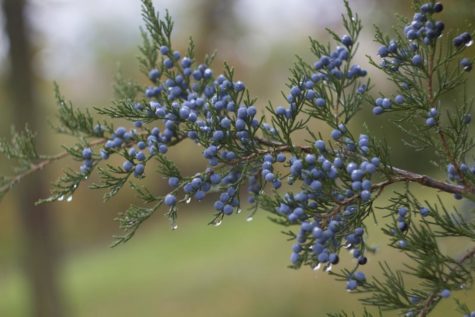
- Ruler: Sun
- Magickal form: Incense, fresh sprigs, berries, essential oil
- Basic Powers: Protection, Love, Healing, Cleansing
- Cautions: Do not drink the tea if you are pregnant, wish to become pregnant, or if you have kidney disease.
In the past, Juniper was regarded as a magick shrub to use against devils, evil spirits, and wild animals. It is mentioned in the Bible as a symbol of protection. Its aromatic scent made it a popular strewing herb, and shoots were burned to disinfect the air in a room.
Brew the berries into a tea and drink it to increase sexual stamina. Crush dried berries to release their scent and add to love potions to attract a man. String the matured berries for an attractive charm designed to attract lovers.
Juniper berries can be used in love spells, particularly to enhance male interest and potency. Steep in wine and drink a few sips daily to increase male virility. Steep in vinegar and add it to your bath to make yourself more attractive to men or apply it directly to the genitals (diluted with water) to increase male interest in them. Or add it to a bath you’re sharing. Juniper berries and their essential oils make for a nice “masculine” scent for men’s cosmetics (aftershave, beard oil, etc.). Use with due caution.
Hang a sprig of fresh Juniper in the home to drive away evil. A sprig of Juniper will protect the wearer from accidents. Sometimes used in anti-theft sachets, as it guards against thieves. Grow Juniper at your doorstep for protection. Gin (which is made from Juniper) can be sprinkled across a threshold to guard against theft.
Juniper is a thief catcher. If you bend a young Juniper branch down to the ground and hold it where you place it with two weights, one a big stone, the other the skull of a murderer, and say, “Juniper, I bend and squeeze you till the thief (name him) returns what he has taken to its place,” the culprit will feel an unaccountable impulse to return the property.’
Brush down the body with a bundle of sprigs to remove illness and place drops of oil in a bowl of water to promote healing in a sick room. Burn Juniper for purification and good health. One of the earliest incenses used by Witches was made from a combination of the leaves and the dried crushed berries.
Though burning Juniper wood gives off only minimal visible smoke, this smoke is highly aromatic, and in ancient times it was used for the ritual purification of temples. The smoke was said to aid clairvoyance, and continued to be burned for purification and to stimulate contact with the Otherworld at the autumn Samhain fire festival at the beginning of the Celtic year.
In central Europe Juniper smoke played a part in the spring-time cleansing and casting out of witchcraft. Juniper was also burned during outbreaks of the Plague, and in Scotland the disease could be dispelled by fumigating the house with Juniper smoke while its occupants were inside, after which the house was aired and the occupants revived with whisky!
Juniper was burned to goddesses and gods in ancient Sumer and Babylon, and was widely used in Egyptian incense formulas. It was sacred to Inanna and her later counterpart Ishtar. Many centuries later in Europe, branches of Juniper were smoldered and carried around fields and farms to release protective energies and guard livestock and crops.
It is a common ritual incense ingredient in Tibet and was much used by various Native American groups.
It is said that a Juniper shrub or tree is a particularly effective and magical hiding place. Perhaps Juniper can be added to hiding and invisibility charms as well.
Juniper essential oil is currently used in traditional aromatherapy to detoxify the body, as a parasite destroyer and antiseptic. This seems in keeping with the “magickal” use of purifying homes and fields mentioned above, for protective rituals are designed to ward off negativity as well as to purge such energies from a person or place.
Inhale Juniper essential oil while visualizing its energies guarding you from negativity and danger. Or, for an internal purification, smell Juniper and visualize.
You can also make Juniper a part of health-maintaining rituals. Regularly smell the scent while seeing yourself eating correctly, exercising, and thinking positively.
Notes:
Because it is a variety of Juniper, and the magickal uses are quite similar, Eastern Red Cedar can be used as a substitute, and vice versa. More about Red Cedar can be found here.
A Healing Ritual
There was a folk medicine custom in some parts of the South West of England of burning the wood and needles close to a sick person. This practice is closely allied to the above New Year customs and presumably recognizes that the vaporized oil released into the air had some beneficial purifying effect to dispel infection.
Like many plants, there was a definite ritual which had to be followed when pulling or collecting Juniper so that the power and essence of the plant was not lost. In the case of Juniper, it had to be pulled up by the roots, the branches made into four bundles and held between the five fingers while intoning the appropriate incantation. Unfortunately the version which has been passed down to us has been heavily Christianised:
“I will pull the bounteous yew,
Through the five bent ribs of Christ,
In the name of the Father, the Son and the Holy Ghost
Against drowning, danger and confusion.”
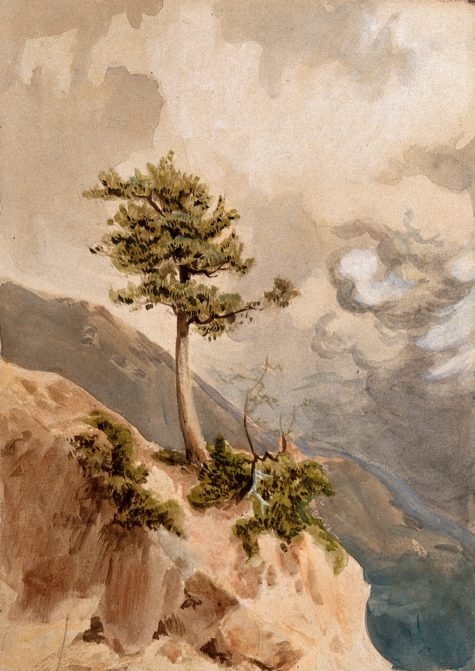
Juniper Mythology and Lore
Juniper was a symbol of the Canaanites’ fertility goddess Ashera or Astarte in Syria. In the Bible’s Old Testament, a Juniper with an angelic presence sheltered the prophet Elijah from Queen Jezebel’s pursuit. Similarly a later apocryphal biblical tale tells of how the infant Jesus and his parents were hidden from King Herod’s soldiers by a Juniper during their flight into Egypt.
Juniper plants are associated with protection in many different Native American tribes. The Interior Salish and Northwest Coast tribes used Juniper to banish evil spirits and protect themselves from witchcraft.
Among the southwestern Pueblos, junipers were believed to counteract ‘ghost sickness,’ a malady which afflicted bereaved relatives or people who handle the bodies of the dead.
Plains Indian tribes, such as the Dakota, Cheyenne, and Pawnee, often hung Juniper boughs on their tepees or burned them in the camp fire to keep their homes safe from storms.
And in many tribes people, especially hunters, would carry a spring of Juniper as a protective charm or rub Juniper branches on their bodies before embarking on a dangerous journey to protect themselves from grizzly bears, monsters, or general bad luck.
Juniper is one of the herbs frequently included in medicine bundles and amulets. Juniper berries were also eaten by people in some Southwestern and Southern California tribes, and Juniper leaves were frequently used as medicinal herbs.
Folk tradition records a divinatory significance to the appearance of Juniper in dreams, for:
- It is unlucky to dream of the tree itself, especially if the person is sick.
- To dream of gathering the berries, if it be in winter, denotes prosperity.
- To dream of the actual berries signifies that the dreamer will shortly arrive at great honors and become an important person.
- To the married it foretells the birth of a male child.
The largest body of folklore concerning Juniper comes from Iceland where it was traditionally believed that Juniper and rowan could not grow together because each creates so much heat that one or other of the trees would be burn up. For the same reason it was considered not a good idea to bring sprigs of both woods into the house together unless you particularly wanted your house to burn down.
Another Icelandic belief has it that if you are building a boat, you must either use both Juniper and rowan wood or use neither of them in the boat, otherwise it will sink.
In Wales it was said that anyone who cut down a Juniper tree would be dead within a year, while in Newfoundland it was believed that wolves and bears are repelled by Juniper wood and for this reason people who kept stock would ensure that Juniper wood was used in building enclosures or stockades in which livestock would be kept.
Also in Newfoundland it is believed that you will always find water under a Juniper tree, though this seems to contradict the natural history of Juniper which, as mentioned above, generally grows best on limestone or chalk soils which are usually well-drained.
The Story entitled Red Riding Hood in the book The Hero of Esthonia tells of a mother laying down Juniper branches and making the sign of the cross over them to protect her sleeping children from devils. In the story The Compassionate Shoemaker in the same book, the devil is defeated by being struck by a staff of Juniper.
In the Argonautica, Medea uses a freshly cut spray of Juniper to sprinkle her sleeping potion into the eyes of the serpent guarding the Golden Fleece.
- Meaning and history of the name Juniper:
From the Latin, juniperus which means “youth producing” or “evergreen.” During the Renaissance era, Junipers were used symbolically in art to represent chastity. Juniper has historically been used as both a boys and girls name, in fact Saint Juniper and Thornton Wilder’s character Brother Juniper are both male.

The Juniper Tree – A Story
“The Juniper Tree” is a German fairy tale collected by the Brothers Grimm. The text in the Grimm collection is in Low German and was originally written down by the painter Philipp Otto Runge. The complete story as originally written can be found over at Widdershins.
Here is a synopsis:
A wealthy and pious couple pray every day for God to grant them a child. One winter, under the Juniper tree in the courtyard, the wife peels an apple. She cuts her finger and drops of blood fall onto the snow. This leads her to wish for a child to be as white as snow and as red as blood. Six months later, the wife becomes gravely ill from eating Juniper berries and asks her husband to bury her beneath the Juniper tree if she dies.
A month later, she gives birth to a baby boy as white as snow and as red as blood. She dies of happiness. Keeping his promise, the husband buries her beneath the Juniper tree. He eventually marries again and he and his new wife have a daughter named Marlinchen (in some versions Marlene, Marjory or Ann Marie).
The new wife loves Marlinchen but despises her stepson. She abuses him every day, claiming that she wishes Marlinchen to inherit her father’s wealth instead of her stepson. One afternoon after school, the stepmother plans to lure her stepson into an empty room containing a chest of apples. Marlinchen sees the chest and asks for an apple, which the stepmother gracefully offers. However, when the boy enters the room and reaches down the chest for an apple, the stepmother slams the lid onto his neck, decapitating him.
The stepmother binds his head with the rest of his body with a bandage and props his body onto a chair outside, with an apple on his lap. Marlinchen, unaware of the situation, asks her stepbrother for an apple. Hearing no response, she is forced by her mother to box him in the ear, causing his head to roll onto the ground.
Marlinchen profusely cries throughout the day whilst the stepmother dismembers the stepson’s body and cooks him into a “blood-soup” for dinner. She later deceives her husband by telling him that his son stayed at the mother’s great uncle’s house. The husband unwittingly eats the “blood-soup” during dinner and proclaims it to be delicious. Marlinchen gathers the bones from the dinner and buries them beneath the Juniper tree with a handkerchief.
Suddenly, a mist emerges from the Juniper tree and a beautiful bird flies out. The bird visits the local townspeople and sings about its brutal murder at the hands of its stepmother. Captivated by its lullaby, a goldsmith, a shoemaker and a miller offer the bird a gold chain, a pair of red shoes and a millstone in return for the bird singing its song again. The bird returns home to give the gold chain to the husband while giving Marlinchen the red shoes.
Meanwhile, the stepmother complains about the “raging fires within her arteries”, revealed to be the real cause of her anger and hatred towards her stepson. She goes outside for relief but the bird drops the millstone onto her head, killing her instantly. Surrounded by smoke and flames, the son, revealed to be the bird, emerges and reunites with his family. They celebrate and head inside for lunch, and live happily ever after.
Sources:
- Encyclopedia of Herbology
- Plant Lore
- Trees For Life
- Witchipedia
- White Dragon
- Encyclopedia of Magickal Ingredients
- The Herb Stop Blog
- Magical Herbalism by Scott Cunningham
- Magical Aromatherapy by Scott Cunningham

- Latin Name: Thuja occidentalis
- Alternative names: Thuja, White Cedar
- Ruler: Sun, Venus
- Type: Evergreen Tree
- Magickal Form: Bark chips, Twigs and Branch tips, Essential Oil
One of the holiest of woods, cedar is considered feminine and receptive in nature. White Cedar (Arborvitae) denotes great beauty, majesty, and strength. It is highly protective when worn and draws money, good health, and well-being when burned. White Cedar (Arborvitae) wood and bark appear in spells where benevolent power is needed.
Add to love potions when strength is needed to overcome hardships. White Cedar (Arborvitae) opens up intuitive channels and brings forth compassion and humility. It is a true symbol of prosperity.
To move a person out without hurting him, cut three White Cedar branches, one three feet long and the others one foot long. Carry them to the person’s house and lay the long branch on the pathway, touching the front door and pointing to the street. Place the two short branches crosswise to this, at equal distances from each other to make a “double cross” shape. As you lay down the branches say: Now you will move by Faith (first branch). Hope (second branch). and Charity (third branch). Then walk away.
To rent a room put Arborvitae or White Cedar oil on the doorknob. People who come to see the room, will touch the doorknob and they will be more inclined to rent it.
To make the one you love follow you, wrap a fresh fig leaf tightly around a strip of White Cedar bark and wrap a leaf torn fro the Bible tightly around them both. Carry this on you, and your lover will follow you if you move.
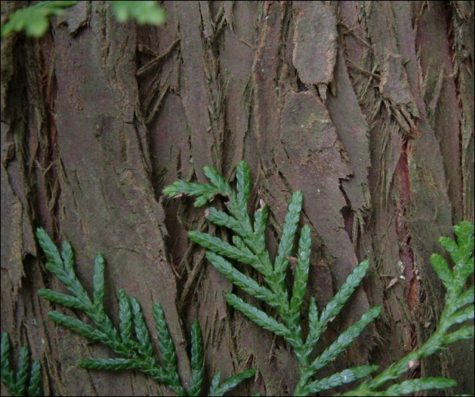
History and Lore
White Cedar (Arborvitae) is a tree with important uses in traditional Ojibwe culture. Honored with the name Nookomis Giizhik (“Grandmother Cedar”), the tree is the subject of sacred legends and is considered a gift to humanity for its myriad uses, among them crafts, construction, and medicine.
A nice native American story about the Cedar can be found here: The Story Of Cedar.
It is one of the four plants of the Ojibwe medicine wheel, associated with the north. White-cedar foliage is rich in Vitamin C and is believed to be the annedda which cured the scurvy of Jacques Cartier and his party in the winter of 1535–1536. There are some reports that the Ojibwa made a soup from the inner bark of the soft twigs.

Arborvitae Aromatherapy
Turn Arborvitae oil into a household spray with this easy do-it-yourself. Add a few drops of Arborvitae essential oil into a spray bottle and add water. Use this spray on surfaces or on hands. Arborvitae oil is a powerful cleansing and purifying agent. By incorporating this spray into your home, you can protect yourself and your family against seasonal and environmental threats while keeping your house fresh and clean.
Arborvitae essential oil has the ability to inspire feelings of peace and calm. If you are looking for a great way to unwind after a long day, place a few drops of Arborvitae oil into a diffuser or rub a drop of Arborvitae oil onto your wrists to produce a sense of peace and calm. Additionally, using Arborvitae essential oil during yoga or Pilates can increase the effectivity of your experience by inducing feelings of soothing relaxation. Diffusing Arborvitae essential oil can also help purify the air and provide a grounding aroma.
Bring your furniture back to life with this DIY Wood Polish with essential oils. If you want to keep wood looking fresh and clean, it is important to invest in proper cleaning supplies and a good routine. One of the most effective ways to clean wood is by using a wood polish that is natural and free of any harmful chemicals. Many commercial wood polishes contain chemicals and artificial fragrances that can cause irritation or health problems when not applied with proper safety precautions. Follow the instructions to this homemade solution to create a natural wood polish that is free of harmful toxins.
Wood furniture should only be polished every couple of months, but make sure to maintain the look and quality of your wood furniture by frequently dusting it or wiping it with a damp microfiber cloth. This will help to keep dust and damaging substances away from the wood and will help keep the wood from looking aged.
Create your own musky outdoor cologne with Arborvitae essential oil. Arborvitae oil’s aroma is woody and warm and when combined with Cedarwood and Frankincense, provides an invigorating aroma, perfect for a fresh cologne scent. Using these oils together will create a great cologne for any occasion and will also produce a fragrance that uplifts and relaxes the senses.
Arborvitae essential oil blends well with Birch, Cedarwood, Cassia, Cinnamon Bark, and Eucalyptus essential oils for diffusion.
Sources:
- Encyclopedia of Herbology
- Encyclopedia of Magickal Ingredients
- Hoodoo Herb and Root Magick
- doTERRA
- Latin Name: Juniperus virginiana
- Planet: Sun
- Element: Fire
- Part Used: Dried wood, essential oil
- Magickal Influences: Spirituality, Self-control
- Warning: Cedarwood oil should not be used by pregnant women.
Cedar has an important place in many cultures as a strong spiritual agent with a cleansing presence, a protective plant in rituals and as medicine. It is commonly ascribed similar properties as Sage; the needles, bark, or sap is burnt as an incense, the smoke it emits protecting and cleansing against spiritual “residue.” Cedar can be “smudged” like sage, to purify a space, home, or person.
In the ancient world, cedar from Lebanon was highly prized – so much so that only a few trees remain standing in that country. The name Lebanon is derived from the Akkadian word lubbunu, incense.
This was one of the most widely used incenses in the general Mesopotamian region and by the pre-contact Native American tribes.
There are few among us who aren’t familiar with the rich scent of cedar. Shavings of the wood are sold in pet supply stores. The characteristic smell of pencils stems from the red cedarwood used to produce them. And many of us have at least smelled a cedarwood chest. These are ideal for storing magickal supplies (everything, that is, except herbs and essential oils).
The fragrant, calming smoke when the wood burns is believed to allay nightmares, night terrors, hauntings, malevolent influences/thought forms, evil spirits, and ill-meaning wild animals. Many native peoples in North America use the smoke to cleanse a home; in the Native-Hispanic traditions, home-cleansings are called “limpias,” and Cedar wood being favored in this way. Again, the smoke of Cedar is used to purify the body, not just the home.
Two main cedarwood essential oils are available. Because the essential oils share similar constituents, Atlas Cedarwood (Cedrus atlantica) or Red Cedarwood (Juniperus virginiana) can be used with equal effectiveness in magickal aromatherapy.
The scent of the wood and the essential oil promotes spirituality. Inhale this sweetly antiseptic, calming fragrance before religious rituals to deepen your connection with Deity.
It’s spiritual qualities make the fragrance of cedar ideal for bringing ourselves into balance. Smell the aroma and visualize yourself as poised, calm, and in control of your own life.
Many Cherokee descendants carry a small piece of cedar wood in their medicine bags worn around the neck for protection. In a legend of the cedar tree told by the Cherokee Indians, the trees literally hold spirits of their ancestors, and they believe the wood carries powerful protective spirits. It is told that the Creator placed the spirits of their people in a newly created tree which makes it a very special tree indeed.
In another old Indian legend, a young hunter has a vision of a redheaded woodpecker that teaches him how to make the flute from a red cedarwood tree; the young hunter uses his flute as a love charm to win his wife, who was the daughter of a big and powerful chief of the village.
It made its way into folklore; bringing good luck and good fortune, health and healing, cedar was burned to invite positive energy, happiness, harmony and peace. Cedar chips or shavings were burned to purify the vibrations of your sacred area and house, driving out all negative entities. Fresh cedar boughs are used as brooms for purification, exorcisms and to cleanse temples.

Superstitions and Lore
The Eastern Red Cedar is a slow growing tree and lives to be very old. It gets its name, grave yard tree, because of an old superstition that says, when a red cedar you planted grows tall enough to shade your grave, it will be time for you to die.
Never transplant a Cedar tree, it is bad luck. If you do transplant a Cedar tree and it dies, you will die soon thereafter.
In the Medieval Christian tradition, a cedar trees (along with elder trees) were thought to possibly have been used to make the cross that Jesus was crucified on, for this reason it was considered bad luck to burn cedar. It was also believed that Cedar brought poverty, so it was not a good idea to put one in your yard.
On the other hand, if a Cedar tree comes up on your land, don’t cut it down. As long as that tree flourishes, your family will have good health.
The Arabs referred to the older Cedars of Lebanon as “saints” and believed that he who injured one would be overtaken by evil.
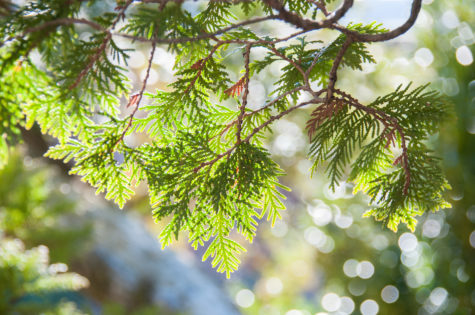
Some Thoughts About Red Cedar
From the Iowa Herbalist here are some interesting thoughts about the Eastern Red Cedar:
I always find it interesting and thought-provoking when the spiritual and emotional effects of plants reflect their physical ones. Just as Cedar seeks to purge our bodies of spiritual impurities, or to protect a home from negative influences, the hard reality is seen at work when Cedar is taken as medicine: whether it is expelling mucus from our lungs as a stimulating expectorant, clearing them of bacterial or viral infection; or opening up our pores in a cleansing fever to clear toxins, as invoked and adopted by sweat ceremonies. Whether you believe in esoteric herbalism, or not, Cedar does one thing: it cleans us, in mind and body.
Now, when I take that mind-transporting whiff of Cedar smoke, I realize why I felt that way. This beautiful tree’s magic is powerful. If you ever need a friend in the midst of illness, or during a hard emotional time, or if you just need to get some bugs out of your system– Cedar is your herb.
If you wish for simpler times, are feeling nostalgic or just want to reminisce, no plant can summon that feeling better; taking you far up into a cabin in the mountains, surrounded by pines and firs, and blankets. Enjoy it in a tea, your favorite elixir, a tasty syrup or perhaps in a calming incense blend. I remember such effects when I’m winding in between the rust-colored Eastern Red Cedars, peppered across Iowa’s tawny grasslands in winter, harvesting their little blue cones. Each time I bring in a jar or two, I spread some of the berries in places where Cedars don’t grow– to make sure there are more trees there for us to enjoy in the future. It’s my way of saying: “Thank you.”
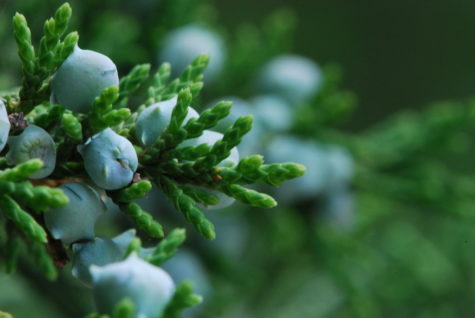
About Juniper
Because Red Cedar is a Juniper plant, the following also holds true.
Juniper, particularly through her wood and berries, is an absolutely wonderful tree with a wide range of uses. In terms of overall meanings in a North American context, we might summarize with the following:
Juniper is about warmth and fire. Juniper helps warm people up and is a strong fire-dominant tree, suggesting many associations with fire: passion, energy, warmth, and the sun.
Juniper offers hope in dark times. Juniper’s berries have long been a staple through the darkest of winters, and I see this both physically and metaphorically. Culturally, we are in a period of darkness, and trees like Juniper can help see us through.
Juniper offers regeneration and bringing things back. Juniper’s ability to grow in places few other trees can demonstrate that this tree is a true land healer, offering us hope in these dark times and sharing the critical message of the healing power of nature. I also think this is tied to its sympathetic magick uses in the American magickal traditions–Juniper helps bring things back.
Sources:
- Encyclopedia of Herbology
- Locusts and Honey
- Magical Aromatherapy by Scott Cunningham
- Iowa Herbalist
- Encyclopedia of Superstitions
- Druid’s Garden
Folk Names:
- Angel Food
- Archangel
- Garden Angelica
- Masterwort
- Root of the Holy Ghost
Magickal Uses:
Angelica (Angelica archangelica) is known in magickal herbalism as a powerful guardian and healer. It is said to banish negativity and attract positive energy. Angelica grows in tall, blossoming stalks—but typically only the root portion is used in spellwork. It is said to enhance female power, protect children, ward off evil, and improve health and family matters.
Angelica means angelic and in the places where it grows, it has been revered as a special plant. In Scandanavia, it was used as a shamanic medicine by the indigenous Sami people. In the U.S., various varieties of Angelica were used in rituals and ceremonies by Native American tribes. The Iroquois brewed Angelica root into a tea and sprinkled it about their homes to quiet “rattling” ghosts.
Angelica’s magickal virtues are linked to its robust stature, pleasant aroma, and association with the Archangel Michael. Legend has it that the angel appeared in a dream to a monk, showing him the herb that could cure the plague in Europe. Traditionally, Angelica blooms on the feast of the Apparition of the Archangel Michael, May 8.
Ruled by the Sun and associated with Venus, Angelica is most often used in spells for protection and exorcism. It can be grown in the garden as a protection. Carry the root with you as an amulet. Burn the dried leaves in exorcism rituals.
Burn the powdered root when you want to invoke angels. Because Angelica is a healing herb, you can mix it in bathwater to promote good health. it also removes hexes. Sprinkle around the house to ward off evil or dry dust your body to remove a curse. It is an ingredient in a Hoodoo working known as the Fiery Wall of Protection.
Angelica is also considered lucky, so rub the root between your palms when you gamble or pick your lottery numbers.
- Carry a piece of Angelica root to bring strength and ward off hexes.
- Put the root in a white mojo bag for protection, or a yellow one for courage.
- Add the dried root to incenses, floor washes, and baths to break jinxes and purify the home.
- Use Angelica to consecrate amulets of Archangel Michael and all Solar charms.
Angelica is associated with personal courage, when that courage is based in moral uprightness. Angelica is said to bring blessings of emotional temperance and harmonious home life.
Mexicans say that if a girl or young woman has been badly frightened, she should carry a whole Angelica root in a white bag. If she was frightened by a man, add a holy card of the Archangel Michael.
Folklore:
It is the date of the blooming that has been regarded as the source of the plant’s name. The day of Michael the Archangel used to be May 8, and Angelica blooms on that date, hence Angelica archangelica. There is more of Angelica in the folklore, such as the legend that an archangel revealed in a vision that Angelica would cure the plague. In time, Angelica came to be regarded as a simply angelic plant, and was known widely as “The Root of the Holy Ghost.”
The history of Angelica is rooted in prehistoric times and even the passage of centuries couldn’t shake the associations between Angelica and pagan beliefs from the Christian mind. It is altogether possible that the plant acquired its angelic stature in the folklore because of the pagan regard for the plant as an infallible guard against witches and evil spirits, and their spells and enchantments.
Peasants tied Angelica leaves around the necks of their children to protect them from harm, and even the name, when invoked, was supposed to be helpful in a jam.
It is alleged that it is the custom in the lake district of what was once Latvia for country peasants to take part in an annual procession, carrying Angelica stems to sell in the towns. Part of the procession is the chanting of a chorus with words so old that no one knows what they mean. This ritual was an early-summer custom and the words of the chorus have been passed from generation to generation.
Metaphysical Meanings
- Magnifies: Divine support, wisdom + deeper meaning
- Dissolves: Apathy, lack of connection, superficiality, surface level perspective
If you are attracted to Angelica, you may be interested in distilling a deeper meaning from everything in life. You may feel tired of things that feel flat or superficial, yearning for a deeper authentic connection to people and a truer intimacy in relationships.
Sometimes we feel safer staying on the surface level in our conversations and experiences. Other times we feel a sense of apathy, disengagement, or worry that there is no greater meaning to the occurrences in our lives. We may fight what happens to us, try to control it or feel hopeless vs. trusting in the wisdom of life.
Angelica magnifies our everyday experience of interconnectedness and deeper meaning woven throughout everything that happens in our lives. It enhances our awareness of benevolent unseen forces and angelic or protective support. It opens up a visceral sense of magic and synchronicity, and a feeling of being fortunate, lucky and grateful. Everything around us feels whimsical and rich with meaning.
We can relinquish control and allow ourselves to trust in the way life unfolds. We have a sense that we are connected to everything and that there is divine support in all our endeavors. We experience a knowingness that we are supported by divine or beneficial good forces and we can ask for assistance or have a relationship with them.
Sources:
This information was collected from a variety of sources all of which are listed in a much more in depth look at Angelica over at the Encyclopedia of Herbology
One of the strongest ingredients for male virility, the Horseradish root is in essence magickal Viagra. It is cultivated in the spring and difficult to find at any other time of the year.
- Women should lay the whole root on the belly and visualize either getting pregnant or being satisfied sexually.
- Men must hold the whole root to the genitals and visualize long-lasting erections.
- Perform these visualizations on a full moon.
Eat both white and red shredded horseradish at any time of the year for protection.
To reverse any malevolent magick against a building’s inhabitants, grate or grind dried horseradish root. Sprinkle it over your thresholds, corners, windows, and any areas perceived as vulnerable.
Source: Encyclopedia of Herbology
